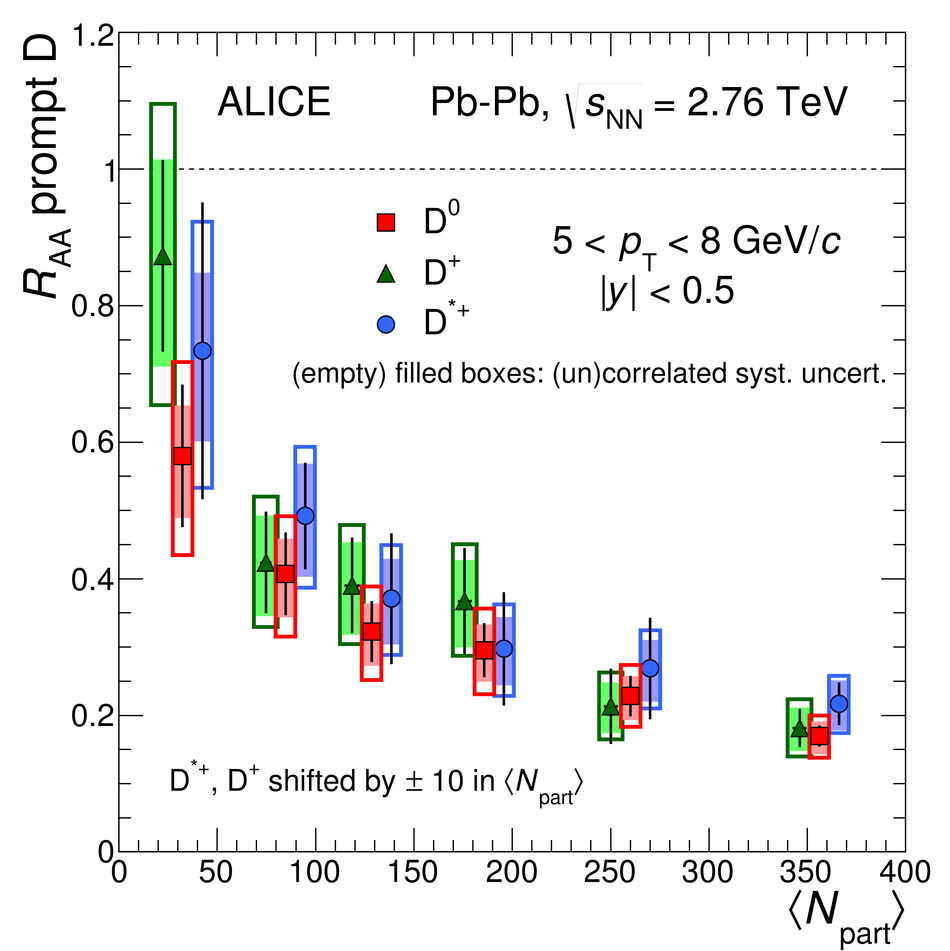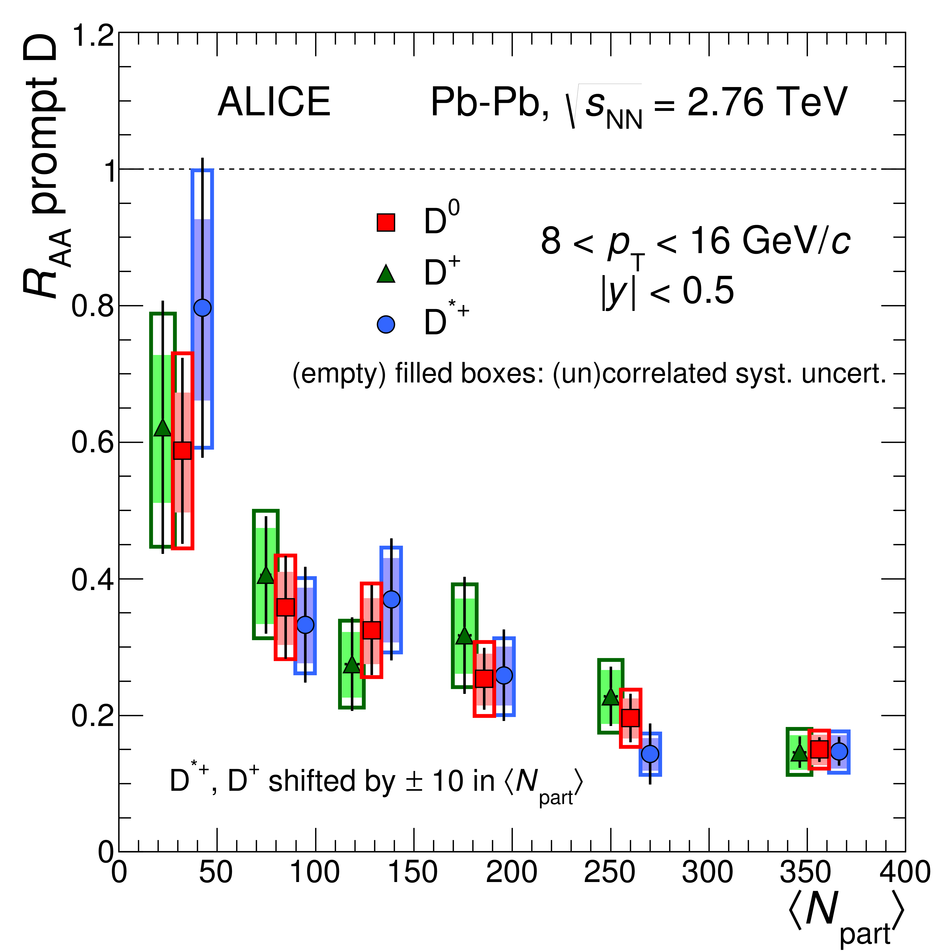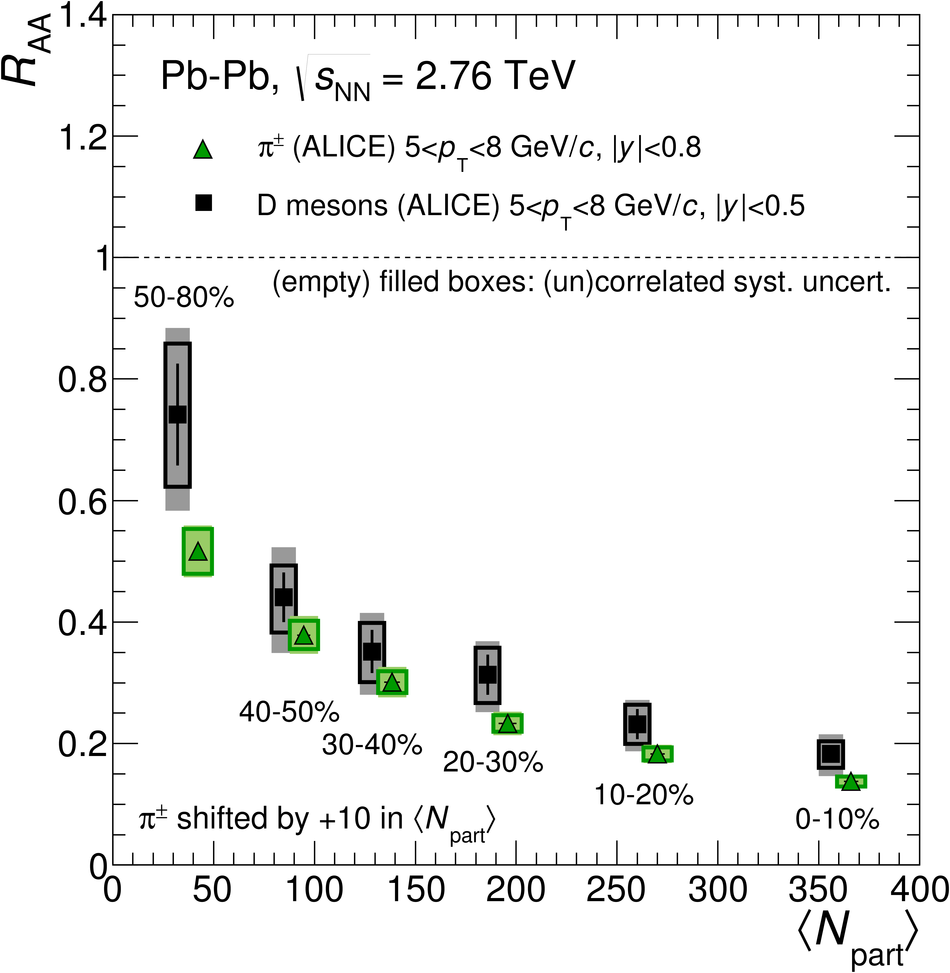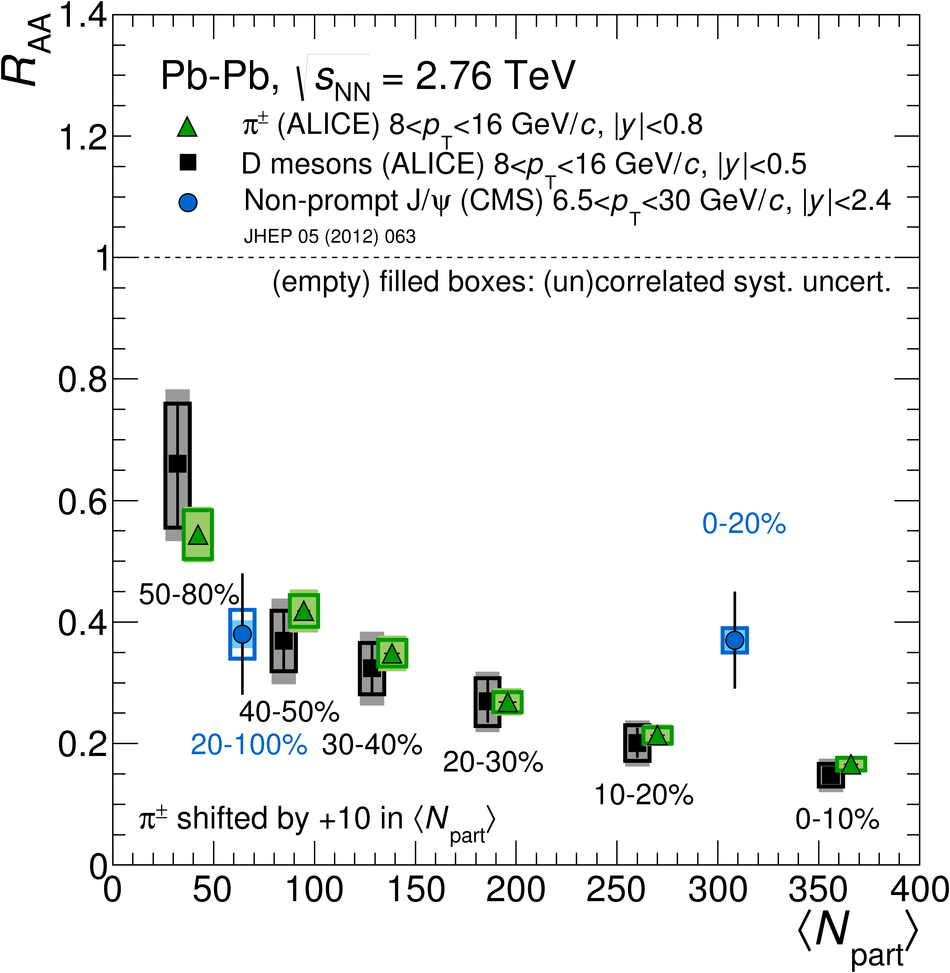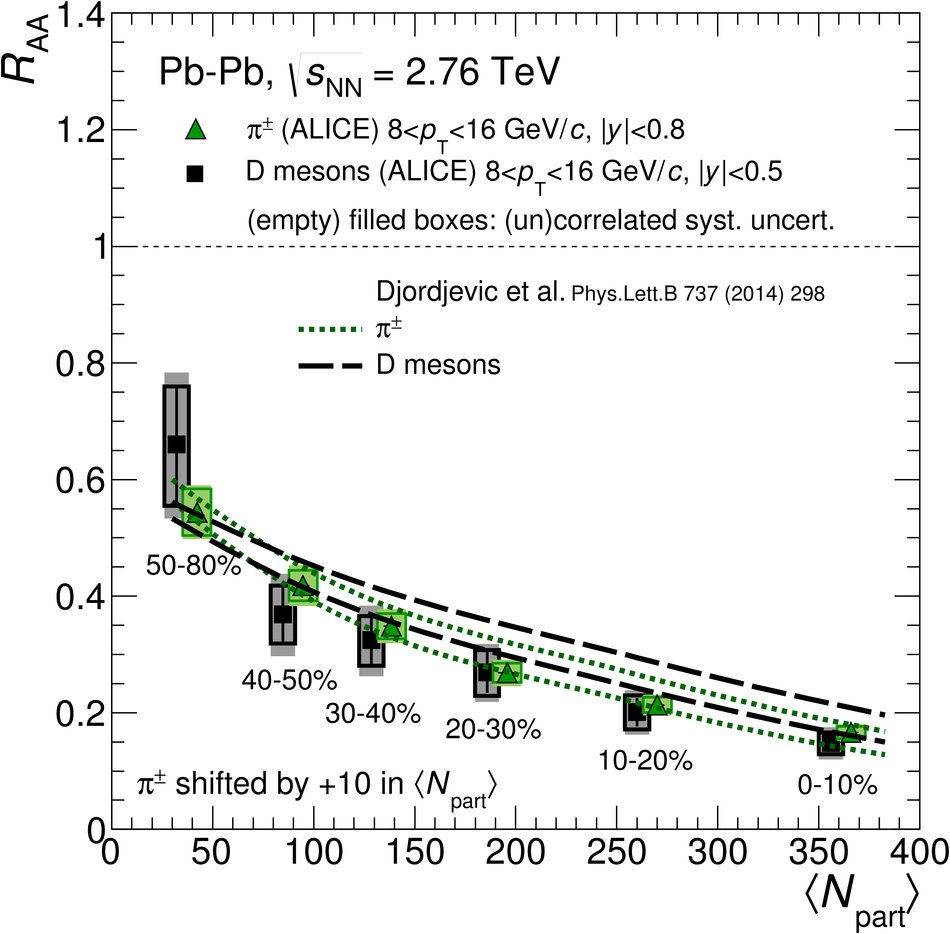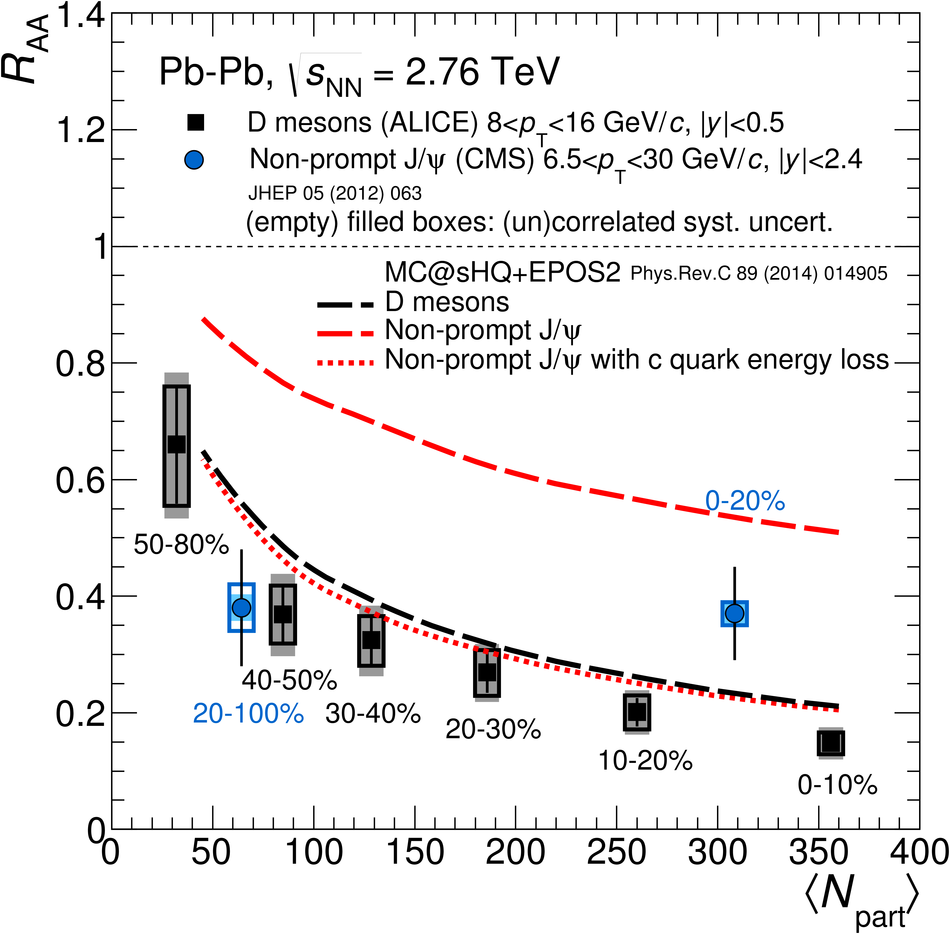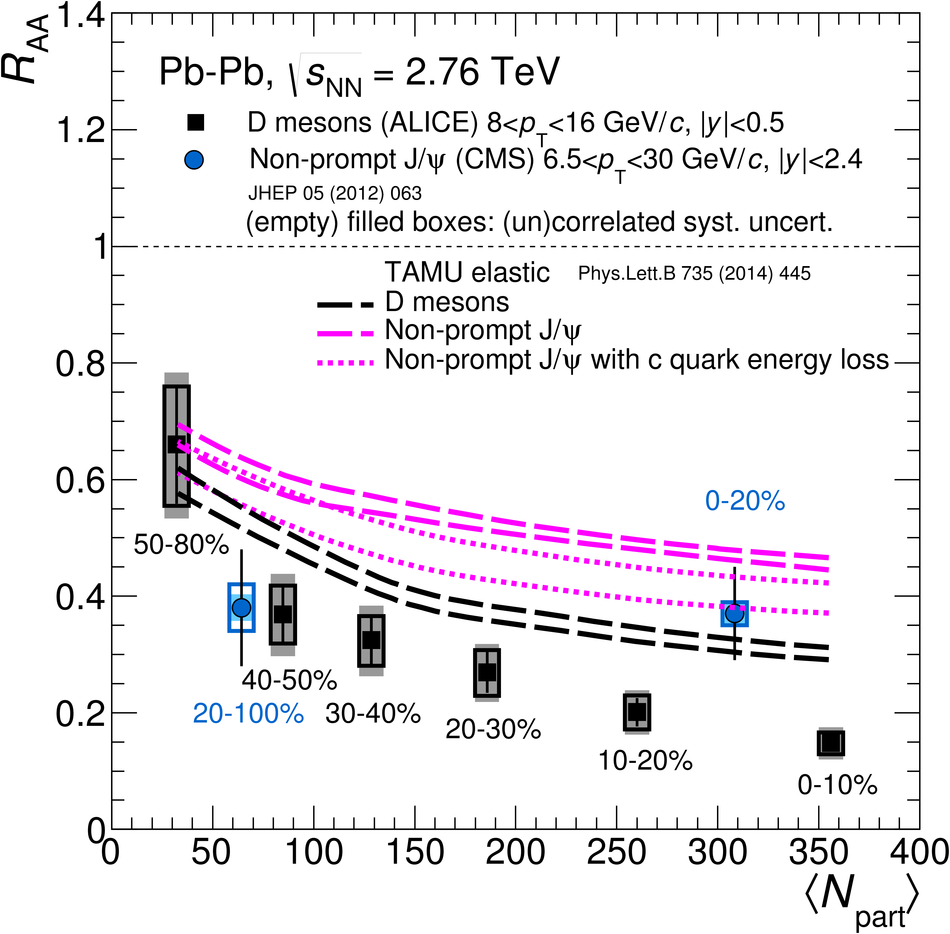The nuclear modification factor, $R_{\rm AA}$, of the prompt charmed mesons ${\rm D^0}$, ${\rm D^+}$ and ${\rm D^{*+}}$, and their antiparticles, was measured with the ALICE detector in Pb-Pb collisions at a centre-of-mass energy $\sqrt{s_{\rm NN}} = 2.76$ TeV in two transverse momentum intervals, $5<~p_{\rm T}<~8$ GeV/$c$ and $8<~p_{\rm T}<~16$ GeV/$c$, and in six collision centrality classes. The $R_{\rm AA}$ shows a maximum suppression of a factor of 5-6 in the 10% most central collisions. The suppression and its centrality dependence are compatible within uncertainties with those of charged pions. A comparison with the $R_{\rm AA}$ of non-prompt ${\rm J}/\psi$ from B meson decays, measured by the CMS Collaboration, hints at a larger suppression of D mesons in the most central collisions.
Note:
Addendum to this paper published on JHEP 6 (2017) 032, also available at CDS: ALICE Public Note: ALICE-PUBLIC-2017-004
(see Additional Figures)
JHEP 11 (2015) 205
HEP Data
e-Print: arXiv:1506.06604 | PDF | inSPIRE
CERN-PH-EP-2015-151


